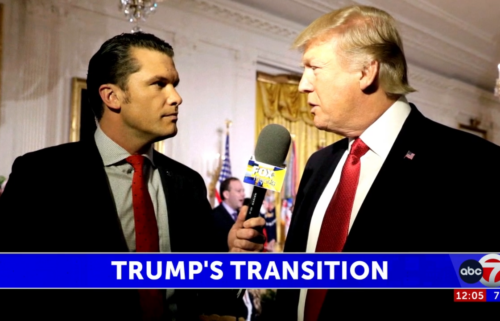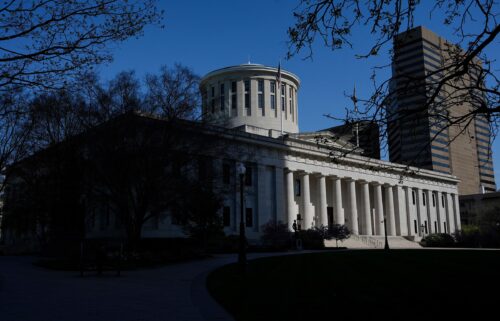County police have seized hundreds of guns with ‘red flag’ law in two years since Parkland shooting
Parishioners at the Plantation, Florida, church had welcomed the young man like any other into their services, but soon grew concerned. The 24-year-old was easily agitated, and had made threatening comments to other churchgoers and online. Later they learned he would sometimes carry guns and a heavy workout plate in the backpack that he always wore.
There was no cause to arrest him, but the leaders of the church and the local law enforcement they consulted with — in a town just miles outside of Parkland, Florida — knew all too well the dangers of unchecked warning signs.
Officials from the Broward County Sheriff’s Office turned to a new tool they’d gained under the state’s nascent red flag law, filing a lengthy petition with a state court that argued the man posed a high risk of danger to others and should have his access to firearms restricted. Within hours, a judge had agreed, and authorities seized nine guns and multiple rounds of ammunition from his possession.
Similar scenarios have played out in communities across the country as a growing number of states passed red flag, or Extreme Risk Protection Order laws, as they try to prevent the next mass shooting. Florida’s Republican-led legislature passed their own version into law less than a month after 17 people were killed at Marjory Stoneman Douglas High School in Parkland in February 2018. Seventeen states and the District of Columbia now have one, too.
In Broward County, which includes Parkland, the red flag law became an effective and indispensable line of defense, local authorities said. According to a new study reported on first by CNN, law enforcement in the county filed a total of 255 petitions and seized more than 400 guns in just the first year of the law’s existence alone.
The trends that emerge from the group’s analysis of each of the petitions reveal a law that was used frequently to blunt an array of deadly threats in one of Florida’s most populous regions.
“There are too many anniversaries of gun violence that we commemorate in our country and I think this report will hopefully show people that it doesn’t have to be this way,” Kelly Drane, a research manager at the Giffords Law Center to Prevent Gun Violence, the advocacy group that produced the report, told CNN.
Researchers with the gun control organization spent weeks on the ground in Broward County and pulled more than 13,000 pages of documents from local courthouses as they built the report, which is described as the first kind of review of red flag laws to produce such a comprehensive and granular overview of their use.
The group argues that based on their findings, similar laws should be adopted in all 50 states, and they hope the report will stand as a rebuttal to skeptics of the policy, like the NRA, which has offered nominal support for red flag laws but opposed efforts in a number of states to pass them because they say the laws abuse gun owners’ due process rights.
Laws that allow police to temporarily remove guns from people determined to pose an immediate threat of harm actually have significant support among gun owners and Republicans. A 2019 review of data from the Johns Hopkins Center for Gun Policy and Research found that 66% of gun owners and 76% of Republicans surveyed supported such policies.
In Broward County, the second-most populous county in the state and the home to the cities of Fort Lauderdale and Hollywood, in addition to Parkland, local law enforcement saw the new law as an immediate boon.
Kristi MacKenzie, an assistant general counsel at the Broward County Sheriff’s Office who handled some of their first risk protection cases, said there was a surge in requests for seizures by officers right after the law passed because the new tool had enabled them to take defensive measures against known people in the community that had previously been untouchable.
“It sounded kind of insurmountable at first,” MacKenzie said in an interview. “We had to hire people in the civil division, we had to have extra overtime for the SWAT teams. It was a lot all at once.”
Even with the high number of requests, officials at the agency are cautious as they decide which requests to turn into petitions before a court. Only about half of the requests that come up from deputies to the legal team at the sheriff’s office are approved, MacKenzie said.
Under Florida’s law, after a petition comes before the court, a judge can order the person’s guns seized immediately for up to 14 days, without allowing the person an opportunity to fight the temporary order in court.
Before that temporary “ex parte” order expires, the court will set a hearing to consider a “final order,” which can result in a person being barred from owning or buying a gun for up to a year. People subject to risk protection orders have their first opportunity to legally protest the move in that hearing.
“In some of these cases, the tough ones, we’ll roundtable it and have five attorneys looking at it,” MacKenzie said. “We don’t take it lightly at all. It’s a very sensitive topic for a lot of people and we want to keep it that way.”
Between March 9, 2018, and March 9, 2019, 255 unique petitions were filed in Broward County – the vast majority of which targeted men, according to the Giffords study.
The average age of a person for which a petition was filed against, referred to as a respondent, was 38, although ages ranged from 14 to 83 in the petitions reviewed by the group.
In many of the cases, law enforcement was alerted to the need for a potential risk protection order by a person closely connected to the respondent: 55 cases were initiated by a spouse or intimate partner, 33 from a parent and 13 from a co-worker.
In the cases involving the youngest respondents, the danger at issue usually involved threats of school shootings or threats of suicide. In 88 percent of the cases, law enforcement cited a recent act or threat of violence the respondent made against himself as a risk factor in their petition.
In every single case put before a court, judges approved the petitions on a temporary basis and with rapid speed — more than half on the same day as the petition came in. Final orders were later issued in 87 percent of the cases.
Four hundred and twelve guns were seized or surrendered to law enforcement as a result.
Broward Circuit Chief Judge Jack Tuter, who has heard about one risk protection order case a day in his Fort Lauderdale courtroom, called the tool “clearly” effective, especially in cases where mental health was a factor.
“What right does a person have if they are in acute mental health crisis and are in possession of a weapon? I think you really forfeit your right until you can at least get in front of a judge,” Tuter said.
Giffords recommends in their report that other law enforcement agencies build in layers of oversight to review the petitions, like the Broward County Sheriff’s Office.
They also suggest that certain relatives should be allowed to petition the court for a risk protection order, in addition to police, to “empower family members who don’t feel comfortable involving law enforcement to take steps to proactively intervene when their loves ones are in crisis, before tragedies occur.”




